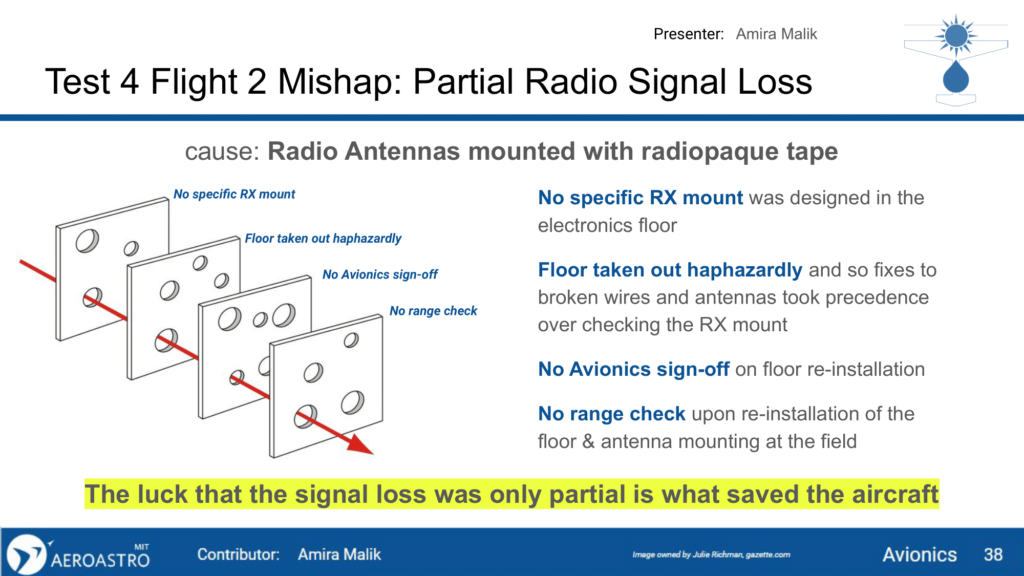This section is labelled “crashes” but I prefer the phrase “lessons learned” since no matter what happens, I always learn something new!
Here are a few of them:
Fully brief your flight area
After a 48 hour road trip, I was itching to fly, and other than acknowledging “yeah there are some tall trees and a powerline,” I didn’t really get a feel for my surroundings.
The taller-than-expected hill, the closer-than-thought trees, and the powerlines!! All were surprises. A good pilot can fly around these obstacles, but a great pilot wouldn’t need to.
Communication shouldn’t be a Single Point of Failure
…or take huge care in ensuring this single link is never close to being compromised. We were lucky that the radio link only partially broke and was recoverable. It could’ve been worse!
Here is a more detailed analysis as to why this failure happened!

Clear the Flight Envelope
This is the A3TB, or the plane that researches active flutter suppression, so excessive flutter would be great! However, as a testbed, the we should be able to “turn off” the flutter by controlling our flight envelope: what we test shouldn’t be present in the entire operating range.
After a V2 I designed, this testbed is flying & open for researchers! Check out the research paper
See Something? Say Something
This year in DBF I was more a mentor/pilot than a designer. Meeting the team at the field, I saw the build quality was quite poor, but I flew anyway. You can see the elevator hinge delaminated mid-flight.
The spin was a result of my overconfidence, and while it was reassuring to know the plane was designed to be unstable and that our other pilot crashed it 3 times, it was humbling to learn my own limits and motivations.
History holds many lessons
This is a flight of the early prototype of the plane above. The test included some slow flights and stalls. You can see at about 1:30 I enter a deep stall followed by a few seconds of “oh crap!” Luckily, I read some reports on getting out of deep stalls which ended up saving the aircraft. Had I not learned from others, we’d’ve crashed.
I wrote a full report for this and the above flight video breaking down the flight and linking the associated research, linked below:
Never Fall Behind the Plane
I wasn’t correcting well enough for the crosswind, I was not stabilized, and when I bounced, because I was descending too quickly, I dropped a wing and crashed.
In my defense, this was only my second landing in this plane! I now have close to 100, but I will always remember to be two steps ahead of the plane, lest I let the plane fly me.
N331EL
I have to sort through both my own emotions, as well as the legal implications of detailing this event. I do hope to talk about it publicly soon.
